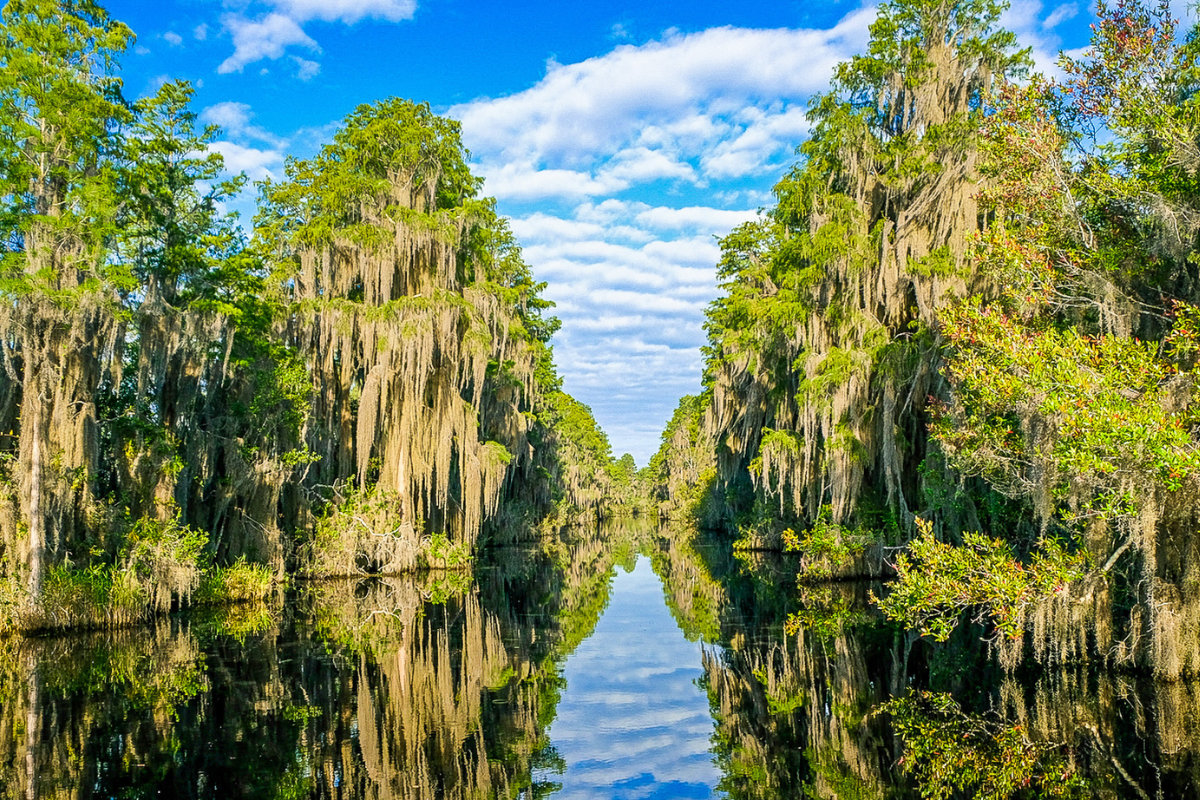by Scott Smith
Generations of Americans have been led to believe that wetlands and swamps are foul, fetid places that deserve only to be drained and developed as “productive” real estate. That mindset has resulted in most of our coastal and freshwater wetlands being dredged and filled and ruined.
Not the Okefenokee, a nearly 700-square mile swamp in southern Georgia that “is one of the great natural wonders of this country,” writes Margaret Renkl, a New York Times columnist who covers environmental and cultural topics about the American South.
The Okefenokee National Wildlife Refuge is much more than the nation’s largest ecologically intact blackwater swamp. Its diverse ecosystems include marsh, upland forest, prairie, cypress swamp and an intricate labyrinth of waterways, reports Renkl in a recent column. “The refuge supports 620 plant species and provides habitat for an immense range of wildlife: at least 50 mammal species, including black bears, otters and bobcats; 234 species of birds; 64 species of reptiles; and 37 species of amphibians.” The refuge is home to the American alligator, as well as a number of threatened and endangered species, such as red-cockaded woodpeckers, wood storks, eastern indigo snakes, and the American eel.
Okefenokee was designated a national wildlife refuge in 1937. In 1974 more than 350,000 acres in the refuge were granted status as a national wilderness area, the highest form of federal protection the U.S. gives an ecosystem.
Renkl sounds the alarm about the fate of the Okefenokee, alerting us to a proposal from an Alabama-based mining company to build a massive strip mine less than three miles from the wildlife refuge. Twin Pines Minerals is seeking permission to plunder a geological formation called Trail Ridge, a raised area of land on the eastern border of the swamp, to extract titanium dioxide, a common mineral commodity used to make everything from high-tech metal alloys to pigments that whiten paint, plastic, sunscreen and toothpaste.
Renkl cites critics of this most recent plan (yes, there have been other proposed schemes), who argue that even the pilot phase of the project “would destroy over 300 acres of wetlands, pump over a million gallons a day of fresh groundwater, discharge pollution, destroy important habitat and cast noise and light over the refuge, according to the Georgia River Network.”
Friends of Animals’ Wildlife Law Program has submitted comments to state authorities urging them to decline TPM’s permit application. The Okefenokee Swamp’s vast area of “dark water” serves as an irreplaceable “carbon sink,” a vital component in the battle against climate change as a source of storage and sequestration of carbon, argues WLP senior attorney Rob Huss.
“The mining processes employed will disturb the hydrological landscape and have a direct effect on the water levels of the swamp. It is only logical, and scientifically evident, that the water levels of the swamp will be altered, causing an adverse effect on not only the immediate environment, but on a global scale as well.
“Friends of Animals calls on the Department of Natural Resources to listen to the scientists who state that strip-mining will cause irreversible damage to the refuge and the swamp, and deny the mining permit, just as the Army Corps of Engineers did in the past,” says Huss.

